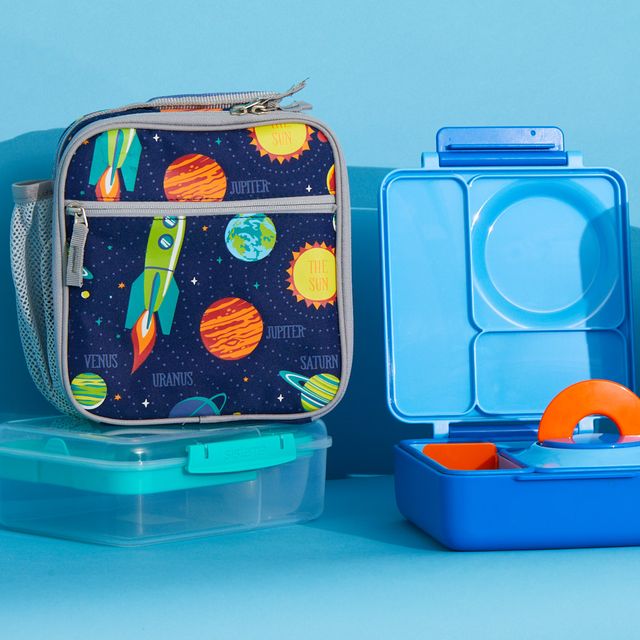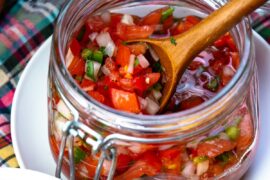Packing Nutritious and Delicious Children’s Lunchboxes
Hello there, super parents! Are you ready to become a lunchbox legend? In this all-inclusive guide, we’re going to teach you the secrets to packing nutritious and delicious lunchboxes that your kiddos will absolutely love. Say goodbye to lunchtime trades and half-eaten sandwiches; it’s time for your child to become the envy of the cafeteria!
Tips for Balanced Meals
Before we dive into the tantalizing world of lunchbox creations, let’s chat about balance. A healthful lunchbox is a blend of macronutrients (carbs, proteins, and fats) and a rainbow of micronutrients (vitamins and minerals). Here’s a quick breakdown:
- Carbohydrates: They’re the primary energy source for our little go-getters. Opt for complex carbs like whole grains, fruits, and veggies.
- Proteins: Essential for growing muscles and repairing tissues. Include good sources like lean meats, beans, tofu, or dairy products.
- Fats: The brain-boosting nutrient that should be consumed in moderation. Avocado, cheese, and nuts are great options.
Dealing with Picky Eaters
Is your child a cautious connoisseur, a.k.a. a picky eater? Fear not! Encourage them to try new things by making food fun. Here are a few tricks:
- Use cookie cutters to create fun-shaped sandwiches or fruits.
- Create a rainbow of colors with different fruits and vegetables.
- Involve them in the lunch-packing process. Kids love to eat what they’ve helped make!
Smart Packing for Freshness
Ever had the heartache of finding a soggy sandwich or a bruised banana at the bottom of a lunchbox? We’ve got your back with some strategic packing tips to maintain freshness:
- Invest in a good-quality, insulated lunchbox with separated compartments or use bento boxes.
- Use ice packs to keep perishables cool, or freeze a water bottle that can double as a drink.
- Wrap wet foods (like pickles or juicy fruits) separately to avoid sogginess.
Fun and Delicious Lunchbox Ideas
Now, the moment you’ve been waiting for – let’s talk food! Here are some creative and yummy lunchbox ideas to get you started:
- The Classic with a Twist: Whole wheat bread + turkey + cheese + lettuce, add a side of rainbow veggies and a piece of fruit.
- Wrap Star: A whole-grain tortilla filled with hummus, shredded carrots, and cucumber sticks, paired with yogurt and a handful of berries.
- Bento Box Bliss: Brown rice sushi rolls, edamame, orange slices, and a mini muffin for a sweet treat.
But hang on, there’s way more where that came from! Keep reading, as we’re about to dive into an ocean of options that will cater to every child’s taste and nutritional needs. We’ll explore allergen-friendly swaps, practice food safety, and understand the importance of hydration. Plus, we’ll share some of our favorite recipes that are not just kid-approved, but also parent-adored because of their simplicity and health benefits.
Being creative with children’s lunchboxes isn’t just about putting a smile on your little one’s face; it’s about fueling them with the energy they need to learn, play, and grow. And remember, the best lunchbox is one that comes home empty because it was just too good to leave any behind! So stay tuned as we gear up to unlock the full potential of your children’s lunchtime meals.

5 Things Parents Should Know in Preparing Children’s Lunchboxes
Packing a lunchbox for your child can seem like a simple task, but it’s an art form that can contribute greatly to their physical and mental well-being. Here’s what every parent should keep in mind:
- Understanding Nutritional Requirements:
Children have specific nutritional needs for their growth and development. Familiarize yourself with these needs and aim to include a variety of food groups in their lunchbox to ensure they get a mix of proteins, carbohydrates, healthy fats, and plenty of vitamins and minerals.
- Food Safety Matters:
To prevent foodborne illnesses, it’s crucial to maintain the proper temperature of the lunchbox contents. Use insulated boxes and ice packs for cold foods, and thermal containers for keeping hot foods safely warm until lunchtime.
- Engaging Your Child:
Children are more likely to eat their lunch when they have a say in what’s packed. Involve them in the decision-making and preparation process—a child who feels ownership over their lunch is excited to eat it and less likely to trade it away or throw it out.
- Accommodating Preferences and Dietary Restrictions:
Be mindful of your child’s likes, dislikes, and any dietary restrictions they or their schoolmates might have. Planning around these will ensure that your child feels comfortable and that their meal is safe for everyone.
- Convenience and Accessibility:
Pack food that is easy to handle and eat. Children have limited time for lunch and little hands can find complex packaging or hard-to-eat foods challenging. Cut fruits and vegetables into bite-sized pieces, and make sure containers can be easily opened by your child.
By keeping these essential factors in mind, you’re well on your way to mastering the craft of perfect lunchbox preparation. Remember, every child is unique, so what works for one may not work for another. It’s all about finding that sweet spot where health, taste, and fun intersect to create meals that nourish and delight. And of course, a loving note tucked inside never hurts to remind your kiddo of the care you’ve put into their meal. Happy lunchbox packing!
Recipes for Success: Lunchbox Favorites
If you’re looking for inspiration, here’s a starter pack of recipe ideas that has something for everyone:
- Easy Peasy Pasta Salad:
Whole grain pasta tossed with cherry tomatoes, diced mozzarella, basil, and a swirl of olive oil. This simple, tasty dish provides carbs for energy and protein for muscle development.
- Crunchy Veggie Quesadilla:
A whole-wheat tortilla filled with a mixture of beans, corn, shredded cheese, and finely chopped greens—grilled to melty perfection. Serve with a side of guacamole or salsa for a fiber and protein-rich lunch.
- Fruity Fun Skewers:
Thread chunks of your child’s favorite fruits onto skewers for a mess-free and fun way to enjoy their vitamins. Try combining different textures and colors, like strawberries, pineapple, grapes, and melon.
- Homemade Granola Bars:
Mix oats, honey, almond butter, and your choice of dried fruits and nuts, then bake. These homemade treats are not only healthier than store-bought ones, but they’re also a great snack packed with energy-boosting ingredients.
- Savory Egg Muffins:
Beat eggs with a splash of milk, diced bell peppers, spinach, and a sprinkle of cheese, then pour into muffin tins and bake. These protein-packed muffins are great for on-the-go eating and can be made in batches for the week ahead.
Don’t forget to adapt these recipes to suit any dietary needs or restrictions your child may have. Whether it’s gluten-free, nut-free, dairy-free, or vegetarian options you’re after, there’s always a way to tweak these suggestions to fit the bill. By mixing and matching these recipes and tips, you’ll be able to craft a varied menu that will have your little ones rushing to the lunch table with excitement!
For more great articles please see here. For more information see here
Disclaimer
The articles available via our website provide general information only and we strongly urge readers to exercise caution and conduct their own thorough research and fact-checking. The information presented should not be taken as absolute truth, and, to the maximum extent permitted by law, we will not be held liable for any inaccuracies or errors in the content. It is essential for individuals to independently verify and validate the information before making any decisions or taking any actions based on the articles.




